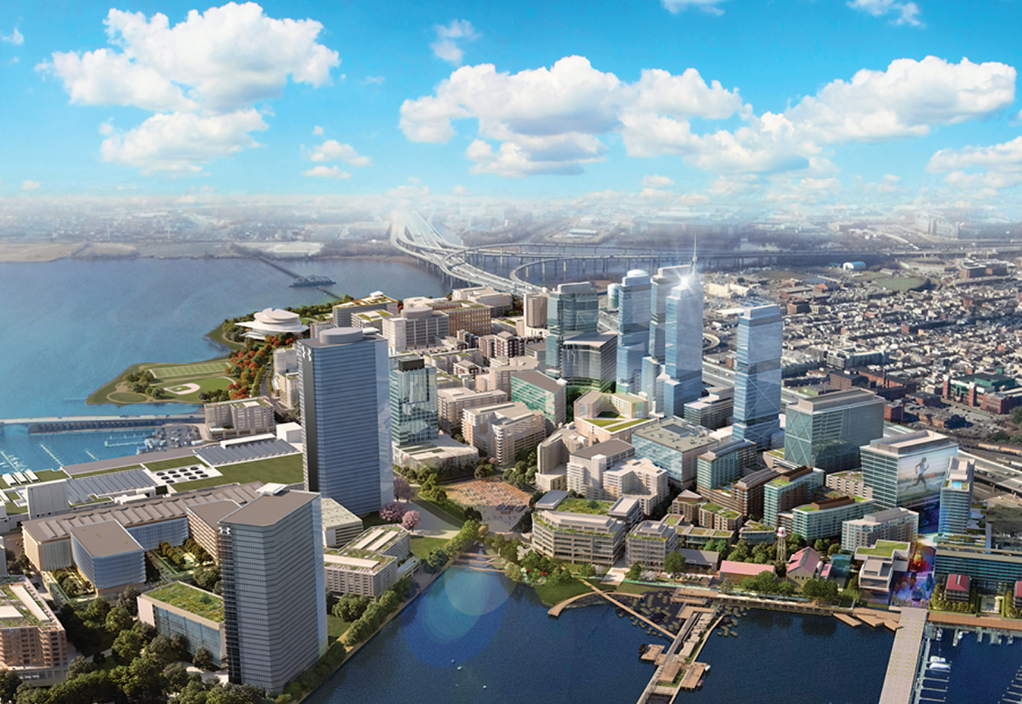
One aspect of President Donald Trump’s 2017 tax overhaul law was a provision designed to create “opportunity zones” in low-income areas around the country. By offering tax breaks to developers for investing in targeted, low-income areas—vetted by each state’s governor—the purpose was to spur economic and commercial activity and revitalization efforts in under-invested neighborhoods.
However, according to a just-released report from ProPublica, an independent, journalism nonprofit focused on government accountability, that new tax law will likely benefit Under Armour CEO Kevin Plank, Goldman Sachs, and other Port Covington investors with what could be millions in tax breaks for their ongoing South Baltimore project.
As the selection process for opportunity zone sites was underway, Gov. Larry Hogan’s deputy chief of staff, Sean Powell, noted in an email last year that Port Covington did not qualify for one of the potential 147 low-income tracts in Maryland. That was largely because of the higher household incomes in Federal Hill and Locust Point that are included in the census tract. ProPublica reports that Hogan, also a real estate developer, of course, nonetheless selected Port Covington after his aides met with Plank’s lobbyists.
“This is a classic example of a windfall benefit,” Robert Stoker, a George Washington University professor who has studied Baltimore’s economic development, told ProPublica reporters Jeff Ernsthausen and Justin Elliott. “A major investment was already planned and now is in a zone where they are going to qualify for all kinds of beneficial tax treatment.”
Port Covington, a former railroad terminal and brown field, is Plank’s ambitious effort to build an essentially new waterfront city within Baltimore’s city boundaries. The project is being overseen by Sagamore Development, a privately held company founded by Plank and real estate developer Marc Weller in 2013. Port Covington is already one of the largest development projects in the U.S.—as well as the recipient of $660 million in tax-incremental financing breaks from Baltimore City, and all told, another $1.3 billion in public infrastructure spending. The entire buildout is projected to cost $7.3 billion and take 25 years to finish.
“Port Covington being part of an Opportunity Zone will attract more investors, foster more economic growth in a neglected area of the City, and directly benefit all of the surrounding communities for decades to come,” Weller said in a statement to ProPublica.
“For parts of Port Covington and the six adjacent South Baltimore communities, the Opportunity Zone program provides an incredible opportunity to drive capital, bring outside investment and create jobs in areas that have been left behind for decades,” Weller added in a statement emailed to Baltimore magazine.
Geared toward attracting newer and younger people to Baltimore—the Sagamore Spirit distillery and Rye Street Tavern are already in place—the futuristic vision for Port Covington calls for mixed-use development that will feature high-rise offices, an upscale hotel, apartments for millennials, restaurants, walkable shopping, and Water Taxi travel.
As ProPublica reports, Port Covington is not in an impoverished census tract and nor is it a new investment. Also, according to its investigation, “the census tract only became eligible to be an opportunity zone thanks to a mapping error.”
City Councilman Ryan Dorsey decried the selection of Port Covington (over other areas in Baltimore) for additional tax breaks Wednesday on Twitter following ProPublica’s report, questioning Weller’s statement that Port Covington is a “neglected area” and Hogan’s statement that the project will go “a long way to providing benefits for the whole city.”
The folks behind Port Covington have only ever been in it for themselves and, like Larry Hogan, don’t actually give a damn about Baltimore. https://t.co/PeUZlHAuvS — Ryan Dorsey (@ElectRyanDorsey) June 19, 2019
Baltimore fair housing lawyer Barbara Samuels asked via a tweet: “Is there a gov’t subsidy that this (misad)venture hasn’t vacuumed up?”
Pro or con, the full story on opportunity zone tax breaks and Port Covington is worth a read.
“The Port Covington tract is just 4 percent black,” the ProPublica pieces highlights in the piece. “For it to be included in the program, another community somewhere in Maryland had to be excluded. The ones that the city suggested that were excluded by the governor, for example, are 68 percent black and have a poverty rate three times higher than Port Covington’s.”
